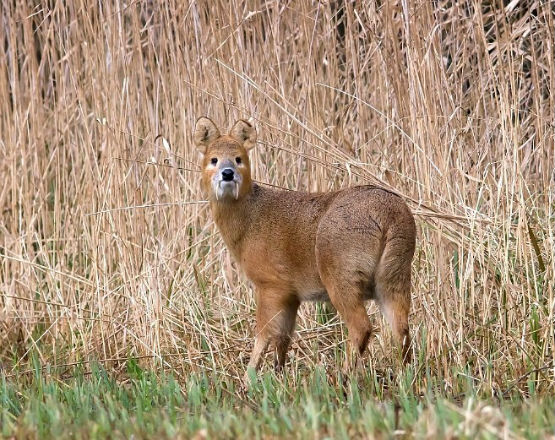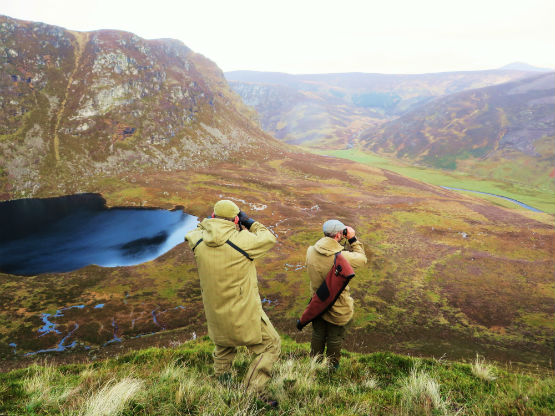It is one of the joys of deer stalking in the UK, that there is pretty much something going on all year round. But what is December renowned for?

Well besides the seasonal increase in demand for venison, December also marks the Chinese Water Deer Rut. Ok, so the rut for this little deer species may not involve blustering around, roaring and groaning, like their larger counterparts, but CWD have their charms and December is undoubtedly the best time of year to see them.
Chinese Water Deer are in fact one of the oldest known deer species and are believed to date back some 35 million years! First introduced to Woburn Abbey over 100 years ago, today this ancient deer species can be found inhabiting the reed beds and open fields of Norfolk and Suffolk and a few surrounding counties.
By virtue of their fairly limited geographical spread, CWD are perhaps the least stalked of all UK deer species. In part this is due to the restrictions of their habitat, however, they are also the species with the shortest season, with both Buck and Doe only being in season from 1st November until 31st March. Therefore if you find yourself musing over what to do with yourself during the month ahead, then give this little species a thought. Indeed, in the coming weeks, I shall be taking my own advice and setting off to Norfolk, in an attempt to have a short film on CWD ready for you in time for Christmas.
So what else is happening? Well, from the middle of the month in Scotland, most of the estates will be rounding off their season for guest’s, where after, most of the winter stalking will be carried out by the pro’s. Elsewhere in the UK, stalkers of other small species of deer will be in for some action, as the Muntjac also become more visible. With ground cover no longer concealing their position, their ‘tell tale’ bark only serves to identify them more readily to the hunter.
It is a point of interest, that amongst Roe, December marks the point of foetal implantation, after the delay that is unique to this species. However what is more important about Roe at this time of year, is that the stalker should spend time looking for the ‘anal tush’ associated with the Doe. The bucks have now cast their antlers and so the ‘tush’ will be the main identifiable feature of the female for the next couple of months.
Before signing of this month, I’d like to mention that the Capreolus Club will be holding its Christmas event at the Carlton Club in St James on the 16th December. If over the last year, you have been wondering what this club is all about, and fancy finding out a little more, then why not purchase a ticket and join us. Simply email me:
All that is left is for me to introduce this month’s film, which comes to you from the glorious Angus Glens of Scotland. We set out with a few members of the Caprolus Club in search of Red Hinds. To watch the film simply follow this link to our Stalking Films page: short-films
 IN Season in England & Wales: Roe Does, Fallow Does & Fallow Buck, Sika Stags & Sika Hinds, Red Stags & Red Hinds, CWD Bucks & CWD Does, Muntjac Buck & Muntjac Does.
IN Season in England & Wales: Roe Does, Fallow Does & Fallow Buck, Sika Stags & Sika Hinds, Red Stags & Red Hinds, CWD Bucks & CWD Does, Muntjac Buck & Muntjac Does.
OFF Season in England & Wales: Roe Buck.
In Season in Scotland: Fallow Buck, Fallow Does, Roe Does, Sika Hinds, Red Hinds.
Off Season in Scotland: Red Stags, Sika Stags & Roe Buck
(Peter Jones - Editor)




















